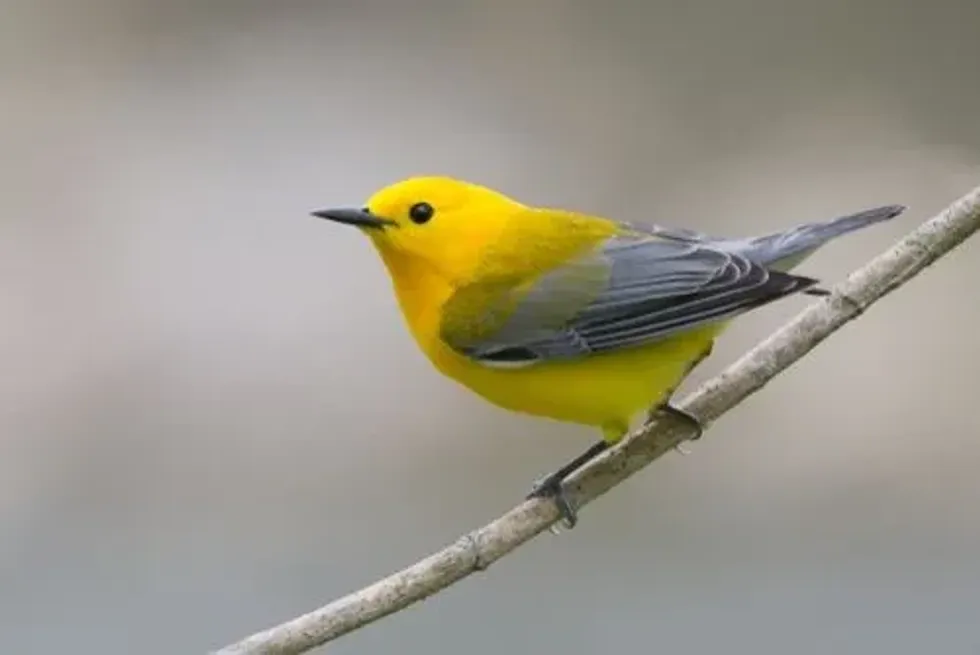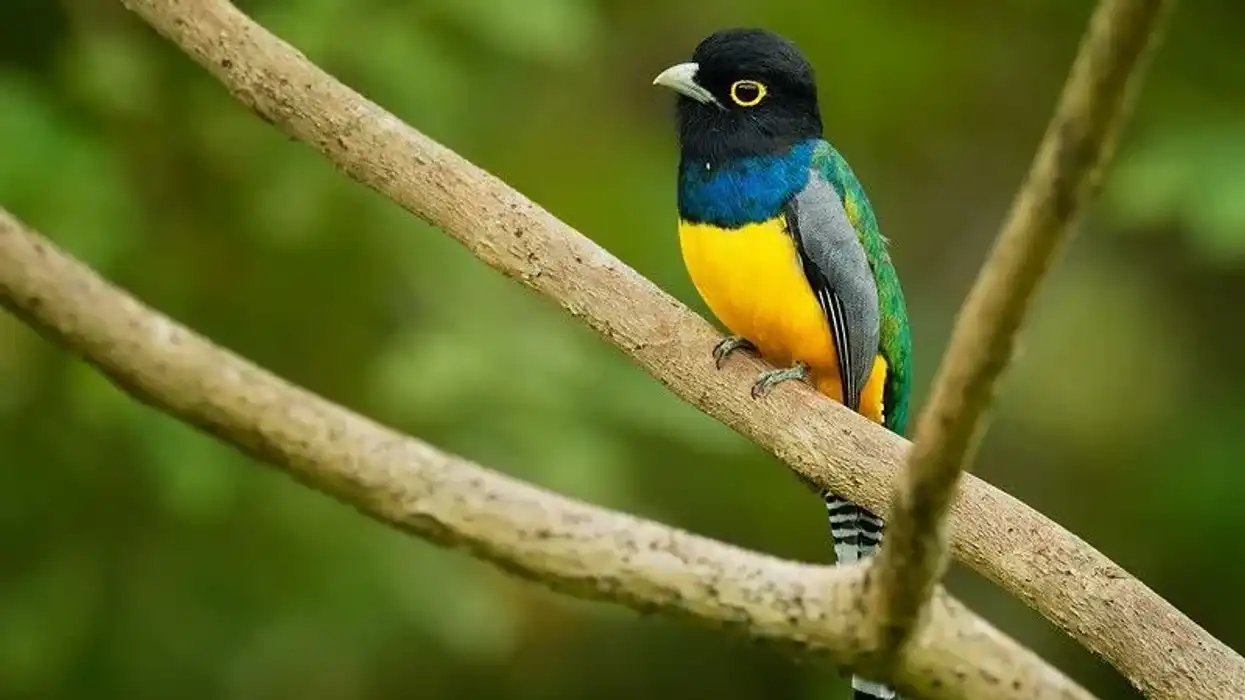Prothonotary warblers, scientifically known as Protonotaria citrea, are a group of small songbirds belonging to the passeriformes family.
Named after their anatomical shading that resembles the golden robes of Roman Catholic church officials who advised the Pope, these tiny members of the aves class are also a sole comrade of genera protonotaria. Protonotaria citrea holds a prominent place in numerous artistry and famous works.
Besides their elucidation in 'A Sand County Almanac' and 'Jailbird', the third plate in ‘The Birds of America’ by John James Audubon beholds a beautiful illustration of Protonotaria citrea.
Read on to discover some interesting facts about these little North American birds that migrate to Central and South America. After reading about these birds of North America, you may also look at cardinal bird facts and gouldian finch facts.
Prothonotary Warbler Interesting Facts
What type of animal is a prothonotary warbler?
Solitary members of the genera protonotaria, prothonotary warblers are a group of small birds belonging to the family parulidae.
What class of animal does a prothonotary warbler belong to?
Prothonotary warblers (Protonotaria citrea) belong to class aves. That is the biological classification of organisms characterized by the presence of forelimbs that are modified into wings and a body covered with feathers. They belong to order passeriformes, family parulidae.
How many prothonotary warblers are there in the world?
There are no exact details about the total population of prothonotary warblers. Prothonotary warbler population as of present is quite low, with major credits to the loss of their habitat.
The densest known population stands at over 2000 pairs who are inhabiting the Francis Beidler Forest in South Carolina. Get hold of a bird guide if you wish to have a look at their nesting site or the birds in motion.
Where does a prothonotary warbler live?
Prothonotary warblers live in bottomland swamps, decaying trees, and flooded woodlands. These North American birds migrate to Central and South America. They make use of prothonotary warbler nest boxes or holes in trees during breeding season. The most popular nesting site for these birds are the abandoned Downy Woodpecker holes in decaying trees.
What is a prothonotary warbler's habitat?
They are distributed across Southeastern Ontario and Eastern United States. They nest in natural or artificial cavities known as nest boxes, they sometimes use old Downy Woodpecker holes in decaying trees along swamps.
Who do prothonotary warblers live with?
Prothonotary warblers show both territorial as well as non-territorial behavior. During the breeding season, these birds are quite aggressive and fend off intruders, whereas during the winter season, they live in harmony.
How long does a prothonotary warbler live?
The average lifespan of prothonotary warblers is about eight years.
How do they reproduce?
The breeding season for these birds starts soon after they migrate to the south during spring. The males tend to reach the breeding destination before the females and defend the nest cavity.
During the breeding season, males find the breeding cavities to establish their nest sites. The adult males then build the prothonotary warbler nests in a tree to attract a mate.
The entrance of the nest cavity is around 2 in (5 cm) wide. Once the prothonotary warbler female has chosen her male mate, the mating process begins.
After the mating process is complete, the female begins laying her eggs. The average clutch size is between four to five eggs, which the female incubates for 12 to 14 days.
What is their conservation status?
Prothonotary warblers are classified by the IUCN as a Least Concern species. Some other organizations however, owing to their dwindling population numbers, classify prothonotary warblers as an Endangered species. These birds are listed as Endangered in Canada.
Prothonotary Warbler Fun Facts
What do prothonotary warblers look like?
Named after the distinguishing resemblance to the robes of the Roman Catholic church officials, prothonotary warblers exhibit a similar yellow hooded appearance. A vibrant shading of bright yellow adorning the head, neck and underside anatomy of the bird is in fact one of the defining features of the species.
However, besides the bright yellow tones, blue gray wings can also be observed on these birds. Protonotaria citrea possess an olive shaded back with morphologically black-tipped, blue-gray upper wings and white-yellow underwings.
Female members of the species are relatively duller in shade than their male counterparts. Prothonotary warblers exhibit wide tails in two-toned patterns and pointed bills.
How cute are they?
On a scale of 5, prothonotary warblers would be allotted full points for their cuteness. Owing to their small size and their vibrant coloring, these songbirds are quite adorable sights to behold.
How do they communicate?
Prothonotary warblers communicate with their partners by using soft chirping vocals, also known as a prothonotary warbler call. Besides the prothonotary warbler sound for chirping, these birds may switch to the occasional prothonotary warbler song in variable frequencies. During flights, loud "seeeep" sounds are observed in the Protonotaria citrea species.
How big is a prothonotary warbler?
Prothonotary warblers are a group of small sized birds. The average length of Protonotaria citrea is about 5.1 in (12 cm), with an average wingspan of 8 in (22 cm).
How fast can a prothonotary warbler fly?
Though there are no exact details about the flying speed of prothonotary warblers, they are known to be short-distance migratory birds and fly at a medium pace.
How much does a prothonotary warbler weigh?
Prothonotary warblers range of weight is capped at 0.02 lb (0.44 oz).
What are the male and female names of the species?
There are no specific names given to the members of prothonotary warblers on the basis of their genders. The males are called male prothonotary warblers, or simply male warblers, while the females are called female prothonotary warblers or female warblers.
What would you call a baby prothonotary warbler?
The offspring of prothonotary warblers are referred to as fledglings.
What do they eat?
Prothonotary warblers are insectivorous organisms. They mainly feed on flies, caterpillars, isopods or snails, butterflies, insect larvae, beetles, spiders and moths. Prothonotary warblers are also known to feed on fruit and seeds, though rarely.
Are they friendly?
Yes, prothonotary warblers are a group of friendly birds. They won’t be seen fighting with each other as warblers like to live in harmony and peace.
Would they make a good pet?
Prothonotary warblers exhibit characteristic activeness, energy and are a group of friendly birds. Therefore, in light of these behavioral features, it can be said that these birds do make wonderful pets.
Also due to their insectivorous diets, Protonotaria citrea provides the additional benefit of controlling the pests in gardens and yards. But do remember, that you will have to construct a prothonotary warbler bird house for these birds in your garden.
Did you know...
Besides their scientific naming, prothonotary warblers were also dispensed the nomenclature golden swamp warbler by John James Audubon. Protonotaria citrea are the sole warblers to go nesting in the cavities of the trees.
Egg dumping is quite rare and unheard of in song bird species. However, Protonotaria citrea are known to lay eggs in the dwelling of the other members of their species. They are named after the golden robes of the protonoarius, an important Catholic Church official.
What color to paint a prothonotary warbler birdhouse?
The ideal shades to paint the bird house are quite variable and depend on certain factors such as location and the type of the birdhouse. Shades such as dull green, tan, white, brown or grey are quite preferable.
Why is it so hard to get a detailed picture of a prothonotary warbler?
The members of the Protonotaria citrea species have an affinity for nesting at higher locations. These birds generally prefer to nest in high and shallow cavities of the trees. Therefore this is the primary reason why it's hard to get a detailed picture of a prothonotary warbler.
Here at Kidadl, we have carefully created lots of interesting family-friendly animal facts for everyone to discover! Learn more about some other birds including short-eared owl, or nightingale.
You can even occupy yourself at home by drawing one of our prothonotary warbler coloring pages.










